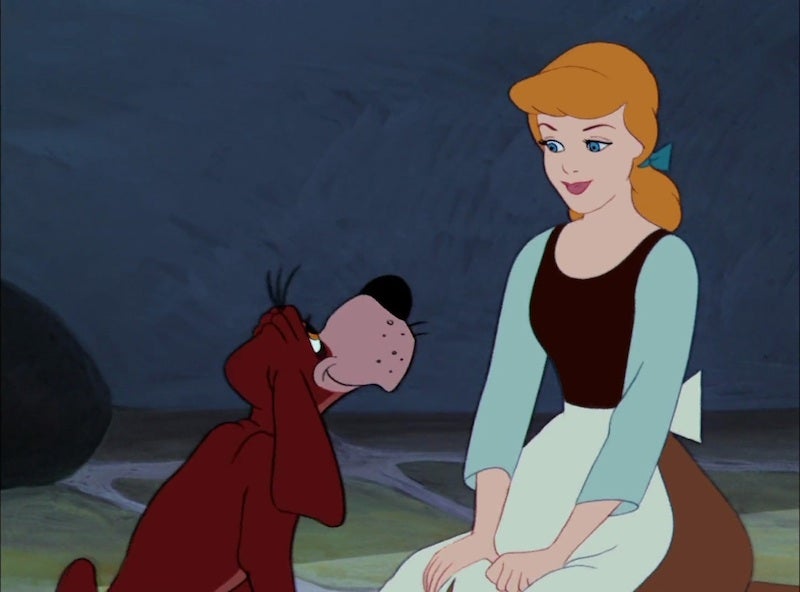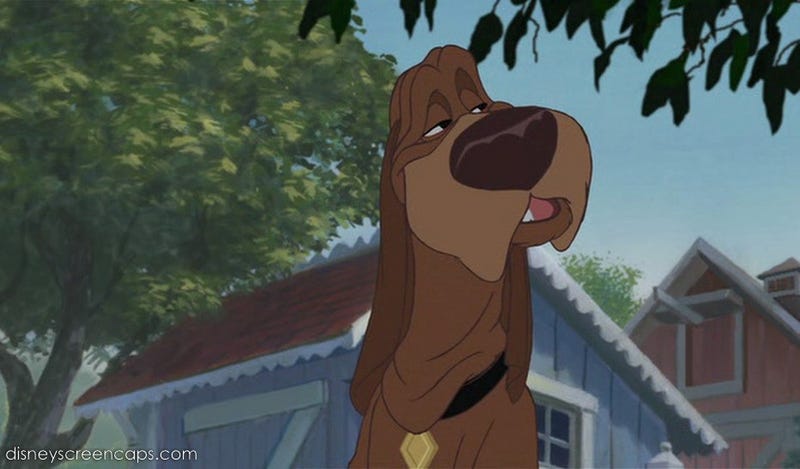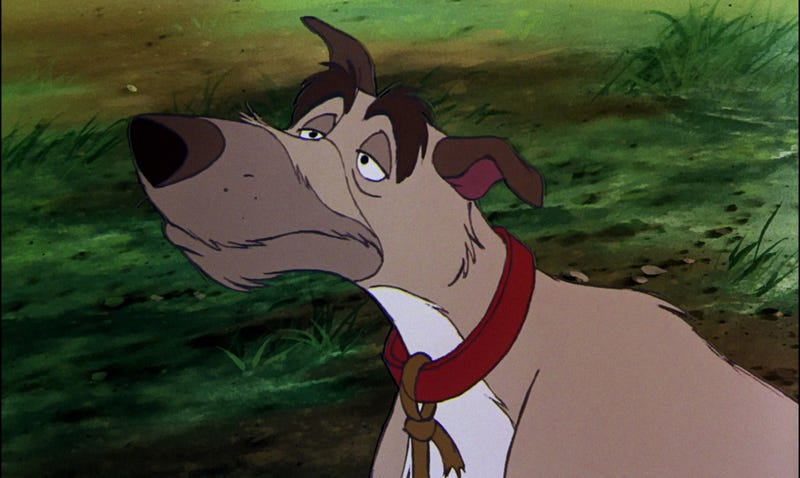MIDDLESEX, Vt. (AP) — State game officials have backed down and allowed a woman to keep a 3-year-old wood duck that was brought home by one of her dogs when it was a chick.
Earlier this year, a game warden arrived at Kimberlee Stevens' home in Middlesex to take the duck named Peep. When Stevens refused to hand the animal over, the warden promised to return with a search warrant. On Friday, the state Fish and Wildlife Department relented and issued a permit allowing the family to keep the bird.
Stevens said one of her dogs brought home the chick in late May 2013. They looked for a nest and its mother, but couldn't find any hint of where it came from.
"It was like he was just dropped from the sky," she said Monday. "It was really strange."
Now, Peep lives inside Stevens' farmhouse, roams the house alongside her five dogs and seven cats, sleeps next to her bed and has its own Facebook page. In good weather, it goes outside.
"He takes a little flight every now and then, but it's just around the house and back," Stevens said. "He's like, 'I'm not going nowhere.'"
Despite its role as a family pet, Peep is not house-trained.
"He poops all over. I just keep my bucket full of bleach water, we just go behind him," she said.
Vermont Fish and Wildlife Commissioner Louis Porter said Monday that private citizens aren't allowed to keep wildlife as pets, because it can be dangerous for both people and critters.
"It's a very, very bad idea for people to take any wild animal out of the wild even if they think they're helping," Porter said.
If state officials had taken Peep, the duck would have been taken to a licensed animal rehabilitator.
"In this particular case it seems as though the damage by leaving this particular duck in place would be less than through issuing this permit," he said.
Radiohead's new music video is no weirder than the TV shows it parodies
Tweet Share Share on Facebook Tweet Share Pin Share
"Pugh, Pugh, Barney, McGrew, Cuthbert, Dibble, Grub." Gibberish? No. These are the names of the firemen, called out by the narrator as the stop-motion characters slid down the pole in the children’s TV show Trumpton. I didn’t have to look these names up; I still remember them from watching this show as a small child growing up in England in the 1960s and '70s.
I‘m pretty sure the members of Radiohead grew up watching Trumpton and Camberwick Green, too. The video for their latest single "Burn the Witch" basically takes the plot of 1973 film The Wicker Man and transposes it into Trumpton. In the original, Mayor; Mrs. Cobbit, the florist; Windy Miller, the... er.. miller; and Chippy Minton, the carpenter go about their daily business of life in a quintessential English town. In the music video, they’re more interested in witch ducking, building gallows, drinking scrumpy, conducting pagan rituals, and baking bleeding deer pie.
The joke, it would seem, is that the video transforms a light children’s show from my past into a surreal psychodrama. But what’s strange about the new Radiohead video is that it’s not that over-the-top. If anything, the shows of my childhood completely out-strange "Burn the Witch."
In addition to the jerky stop motion of the Trumptonshire, there was also The Magic Roundabout. The show aired just before the 6 o‘clock evening news. As soon as it ended my brother and I would always start fighting. The Magic Roundabout was kind of Seinfeld for kids: it was about nothing. The eclectic cast of characters includes Dougal, the dog; Brian, the snail; Ermintrude, the cow; Dylan, the hippy rabbit (who was unashamedly and perpetually stoned); Florence, a normal girl and the only sane character in the whole show; and Zebedee, who had a red face, a mohawk, mustache, and a spring instead of legs. The motley crew would have various crazy adventures that never made any sense, even to a five year old. The show ended when Zebedee said "Time for Bed," which was also my cue to punch my brother, starting our ritual evening fight, followed by my mother shouting, "Just wait til your father gets home!"
If The Magic Roundabout was weird, Roobarb and Custard Too was borderline insane. Rhubarb (the dog) and Custard (the cat) were quarreling enemies who got into various spats while the birds in the garden egged them on. All of the voices were provided by the narrator Richard Briers, a charming, quintessentially English actor whose calming voice acted as a smooth counterpoint to the insane, jerky, shaky, manic marker-pen animation. Roobarb and Custard Too also aired just before the 6 o’clock evening news, meaning it had a similar effect on its young audience as drinking two cans of Red Bull just before bedtime.
The success of Roobarb and Custard Too clearly went to the team’s head. Their subsequent show Noah and Nelly pushed the boundaries of surreal children’s TV just a little bit too far. I actually can’t tell you what Noah and Nelly was about because I absolutely have no idea. All I remember was Noah had a pirate accent; he and his wife wore rain hats (it rained all the time which is the only part of the show that felt grounded in reality); and they travelled around in an inflatable arc full of animals, and various household appliances came to life, and everyone drank lots of tea.
The video for "Burn the Witch" is an exercise in dark nostalgia that is explicitly unsettling with its satanic imagery and human sacrifice. But Thom Yorke and his chums could have kept it really simple and just played the song over real episodes of Trumpton. That would have totally screwed with our childhood memories and probably made us question our entire upbringing.
But for those of you who didn’t grow up in a small English town and want to experience true home county's angst, I suggest putting on your favorite Radiohead album while watching a mashup of The Magic Roundabout and Noah and Nelly on a loop. And then remind yourself that generations of British children grew up watching these shows for real. It explains a lot.
Sleep Disorders in Disney Cartoons Were Surprisingly Accurate

"Sometimes," said Walt Disney, "we can recognize ourselves in animals. That's what makes them so interesting." He was more right than he knew. One group of people may have had particular insight into human sleep behavior and its disorders: Disney animators.
It wasn't until the 1980s that "REM Sleep Behavior Disorder," or RBD, became formally recognized for human patients and it wasn't until 1990 that the International Classification of Sleep Disorders (ICSD) included it as an official diagnosis.
RBD is characterized, according to the ICSD, by "punching, kicking, leaping, and running from the bed during attempted dream enactment are frequent manifestations and usually correlate with the reported imagery." Typically, as we enter REM sleep, our bodies become paralyzed in order to prevent us from acting out out dreams. But in RBD, that paralysis doesn't occur.
Advertisement
Decades before RBD was taken seriously by the medical and scientific communities, Disney movies were full of scientifically accurate depictions of sleep and its disorders.
In 2007, a Spanish neurologist named Alex Iranzo was watching the 1950 animated feature Cinderella. In it, he noticed a cartoon dog, Bruno, having nightmares with dream enactment; that is, the pooch acted out his dreams while still asleep, rather than remaining paralyzed while dreaming, which is the typical, non-disordered way to dream. The dog's behavior, according to Iranzo, "strongly resembled RBD." The scene was not included in the original story by Perrault, nor in the Grimm adaptation, so it was likely the Disney writers themselves, Bill Peet and Ward Kimball, who were responsible for the astute observation of dog behavior.
Sponsored
His observation prompted Iranzo to team up with sleep researchers Carlos H. Schenck and Jorge Fonte to investigate the other animated Disney feature-length films and cartoon shorts. In addition to Bruno, they found at least three other cartoon dogs suffering from RBD.
In Lady and the Tramp (1955), it's Trusty who shows signs of RBD:
While dreaming of chasing a criminal through the swamps, Trusty has his eyes closed while growling, sniffing around, moving his paws as if he were running, and he drags himself across the floor. This episode was witnessed by Lady and Jock. In this same scene, Jock explains to Lady that Trusty is losing his sense of smell. During later scenes in the movie, the viewer becomes aware of how Trusty is also losing his memory. Thus, Trusty has developed the apparent clinical triad of RBD, hyposmia and cognitive impairment.

Indeed, it is now known that hyposmia (the loss of smell) often co-occurs with chronic, idiopathic RBD, and that the pair can be an early feature of neurodegenerative diseases like Parkinson's or dementia.
Advertisement
In The Fox and the Hound (1981), it's Amos Slade's dog Chief:
In one scene, Chief engages in an episode of presumed RBD that is witnessed by Tod and Copper. While asleep inside a barrel, Chief talks, howls, moans, moves the paws and the head, kicks and even laughs with his eyes closed. It is of interest to note that when the two friends are seeing Chief moving and talking, Copper believes that he is waking up, but Tod corrects him by observing that Chief is dream- ing that he is hunting a fox and a big old badger.

Unlike for Cinderella's Bruno, Chief's RBD-like symptoms were in the original novel by Daniel P. Mannix. "'The big half-bred bloodhound lay in his barrel kennel and dreamed he was deer hunting...The hound kicked convulsively in his barrel and whined with eagerness...With a cry that was half bark, half growl, the hound came awake.''
Finally, Pluto's Judgement Day was a 1935 short. Pluto himself experiences an episode of RBD:
Pluto has a nightmare in which he dreams that a judge and a jury totally composed of cats cast judgment on him for having chased and tormented cats throughout his life. He is found guilty and is condemned to die by burning at the stake. When in the dream the flames of death are encircling him, Pluto is shown to actually be asleep while howling, barking and moving all four paws vigorously, and then he runs away with his eyes closed until he falls into a washing tub filled with water and suddenly awakens, happily realizing that he was only having a nightmare.
What's impressive about this is that each of these cartoons were produced before RBD was formally described in humans, let alone in dogs. (Though the 1981 feature The Fox and the Hound came after first French researchers Jouvet and Delorme described RBD in an experimental cat model, in 1965.)
Was the Disney animation studio secretly full of sleep scientists? Probably not.
What inspired the screenwriters for Disney to include episodes of (dog) RBD remains speculative. However, a likely possibility is first-hand experience in witnessing RBD in their own or others' dogs or they may have devised an exaggerated form and caricature of the facial twitching, padding movements and whining sounds that are commonly seen in normal dogs while they sleep
Still, the writers' perceptions of their own and their pets' sleep behaviors is remarkably consistent with the medical and psychological literature. The portrayals of RBD in Bruno, Trusty, Chief, and Pluto are similar among themselves and also are common with human RBD. For example, all the dogs are older males, and RBD is also more common in older human males.
They say that storytellers are among the most astute observers of human behavior; those employed by Disney in the so-called "golden age of animation" certainly were.
Read the entire study online at Sleep Medicine.